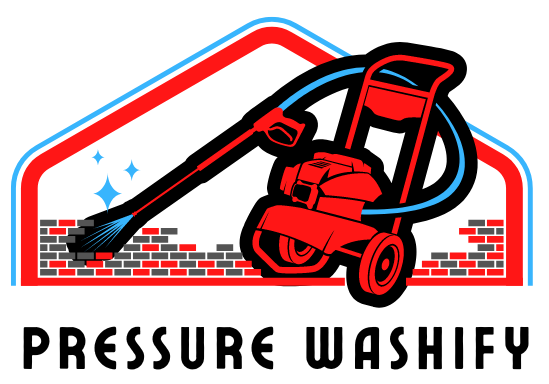Affiliate Disclaimer: This post may contain affiliate links, meaning we get a commission if you decide to make a purchase through our links, at no extra cost to you.
If there’s one tool that has transformed the chore of cleaning from a tiring task to an almost therapeutic activity, it’s the pressure washer pump. What was once a lengthy process of scrubbing and rinsing is now a speedy task, all thanks to the power of pressurized water. Whether it’s washing your vehicle, cleaning your driveway, or getting rid of stubborn grime from your grill grate, a pressure washer pump makes it all seem effortless.
However, to unlock the true potential of this machine, it’s crucial to understand what goes into selecting the perfect pressure washer pump, as not all pumps are created equal. This guide aims to equip you with the necessary knowledge to choose the right pump for your needs.
Reciprocating Pumps
Definition and Working Principle
Reciprocating pumps, as the name suggests, operate through a reciprocating motion – back and forth – in a cylinder to deliver fluids. These positive displacement pumps work by increasing the pressure of the fluid by decreasing its volume.
The action of the cylinder (either a plunger or piston) draws fluid into the cylinder through the suction valve on the intake stroke and then pushes it out through the discharge valve on the delivery stroke.
Subtypes
Reciprocating pumps can be divided into two main types: plunger pumps and piston pumps.
Wobble Pumps
Wobble pumps are the simplest and most economical type of reciprocating pumps. Their design features a wobble plate connected to the drive shaft, causing the pistons to move back and forth when the shaft spins.
While they are more affordable, they typically have a shorter lifespan and are best suited for infrequent, light-duty pressure washing tasks.
Axial Cam Pumps
Axial cam pumps are a step up from wobble pumps and offer efficient performance and a relatively long lifespan. These pumps utilize an axial cam system to drive the pistons, providing greater power and efficiency.
They are ideal for homeowners who conduct medium-duty pressure washing tasks frequently.
Triplex Pumps
Triplex pumps are considered the most durable and efficient of the reciprocating pumps. They employ three pistons and a swashplate to create water pressure, capable of handling heavy-duty professional pressure washing tasks.
While they are a bit more expensive, their superior durability and performance often justify the cost.
Plunger Pumps
Plunger pumps, another subtype of reciprocating pumps, utilize a high-pressure seal that moves with the plunger. This seal is subjected to the pumping pressure, whereas the plunger delivers pressure.
These pumps are excellent for handling high-pressure fluids.
Piston Pumps
Finally, piston pumps use a piston that moves within a cylinder to draw in and push out the fluid. The seal in a piston pump remains stationary.
These pumps are versatile and capable of handling a range of fluid types and pressures.
Pros & Cons
| Type of Pump | Pros | Cons |
|---|---|---|
| Wobble Pump | Simple design, Economical | Shorter lifespan, limited to light-duty tasks |
| Axial Cam Pump | Efficient performance, Longer lifespan than wobble pumps | More expensive than wobble pumps, May not be suitable for heavy-duty tasks |
| Triplex Pump | Durable, Excellent performance, Suitable for heavy-duty professional tasks | High initial cost, Complexity may lead to extra maintenance |
| Plunger Pump | Ideal for high-pressure applications, Reliable | High-pressure environment may require frequent maintenance, More complex |
| Piston Pump | Versatile, Can handle different pressures and fluid types | Not as high-pressure tolerant as plunger pumps, More complex |
Common Applications and Uses
Reciprocating pumps have versatile applications because of their operational characteristics. Plunger pumps are often employed in high-pressure washing, descaling, and water jetting. Piston pumps are commonly used in areas like pressure lubrication, hydraulic power transmission, and in industries where a range of fluid types is used.
Understanding the intricacies and trade-offs of these pumps is indispensable to making an informed decision suited to your specific requirements.
Rotary Pumps
Definition and Working Principle
Rotary pumps function via the rotation of various machine parts within the pump to increase pressure and move fluid. Their operation hinges on the principle of displacement, where the rotary motion creates a vacuum, drawing fluid in, and the rotation of the parts then expels the fluid under pressure.
These pumps are characterized by their continuous flow rates and ability to handle high pressures and viscosities, making them versatile across numerous applications.
Subtypes
Rotary pumps fall into two prevalent subtypes: gear pumps and vane pumps.
Gear Pumps
Gear pumps consist essentially of two gears rotating against each other. One gear drives the other, and as they rotate, the fluid moves along the outer walls of the gears, moving from the intake to the discharge point.
Vane Pumps
Vane pumps, on the other hand, encompass a rotor with multiple vanes that slide in and out, creating chambers of varying sizes. As the rotor spins, these chambers draw in fluid which is then transported and expelled at the discharge point.
Pros and Cons
| Type of Pump | Pros | Cons |
|---|---|---|
| Gear Pump | High pressure capabilities, Handles high viscosity fluids well, Simple and robust construction | Not suitable for low viscosity or shear-sensitive fluids, Can cause noise and vibration, Regular wear and tear requiring maintenance |
| Vane Pump | Handles a wide range of viscosities, Low noise levels, Can manage lower pressures efficiently | Less robust compared to gear pumps, Not suitable for high-pressure applications, Vanes wear out over time requiring replacement |
Common Applications and Uses
Given their ability to handle high pressures and viscosities, rotary pumps find application across various industries. Gear pumps, for instance, are extensively used in oil, fuel, and hydraulic fluid transfer. Vane pumps are commonly found in fuel injection systems and automatic transmission systems.
Other applications include chemical processing, the food and beverage industry, and pump applications requiring constant fluid delivery such as in heating or air conditioning systems.
Choosing the Right Pump for Your Pressure Washer
After understanding the nitty-gritty of the various types of reciprocating pumps available, your next big step is choosing which one is the right fit for your needs. In this section, we will help you navigate this decision-making process, pointing out key factors you need to consider.
Assess Your Needs
Your choice of pump should primarily hinge on the types of tasks you plan on conducting.
- For light-duty tasks such as cleaning patio furniture, vehicles, and small decks and patios, a Wobble pump might suffice.
- For homeowners who frequently engage in medium-duty chores like cleaning gutters, residential siding, and large decks, a pump with a bit more verve, like an Axial Cam pump, could be a better fit.
- For heavy-duty tasks like Paint stripping, fleet maintenance, or surface preparation for a repaint, you need a pump that’s up to the Job – the Triplex pump. Its design lends itself well for professional-level tasks.
- In industries where a high-pressure environment is prevalent, Plunger pumps come in handy.
- Piston pumps, given their versatility, are useful when your tasks require a range of fluid types and pressures.
Lifespan and Maintenance
The lifespan and maintenance level of each pump type should also guide your decision. More complex pumps may deliver higher performance, but they could require more frequent maintenance and have a higher initial cost.
If you plan to use your pressure washer frequently or for commercial applications, a higher-end pump like the Triplex or Plunger pump might make sense, as their durability might offset the initial cost over time. Economical pumps like Wobble or Axial Cam pumps may be sufficient if only occasional use is planned.
Best Pressure Washer Pump Brands
Some of the most renowned pressure washer pump brands include CAT, Comet, General Pump, Karcher, Kranzle, AAA Pumps, and Annovi Reverberi. Their products are characterized by quality, performance, and reliability, ensuring you get the best value for your money.
CAT Pumps
CAT Pumps is widely known for its high-quality industrial triplex plunger pumps. A popular model in their lineup is the CAT 4PPX30GSI, which offers 3000 PSI with a 3.0 GPM flow rate.
This robust pump can be found in brands like Pressure-Pro and Mi-T-M pressure washers.
Comet Pumps
Comet is recognized for its excellent axial cam and triplex reciprocating pumps. Their AXD series, like the AXD 3020 G, provides a good balance of performance and value.
The Comet ZWD-K series, compatible with brands like Simpson and DeWalt, features reliable triplex-plunger pumps suitable for heavy-duty applications.
General Pump
General Pump offers a wide range of pumps, including their popular T series (triplex plunger pumps), which are known for their durability and high-performance capabilities.
These pumps are used in brands like BE Pressure, NorthStar, and SIMPSON pressure washers.
Karcher Pumps
Karcher is renowned for its pumps utilized in both residential and commercial levels. Their offerings include axial cam pumps and the heavy-duty K3 series (triplex pumps).
Karcher pumps are used in their own Karcher pressure washer lineup.
Kranzle Pumps
Kranzle’s German-engineered pumps are prized for their long-lasting performance. They utilize quality brass materials and ceramic plungers, setting them apart in terms of durability.
Their K-series pumps are featured in their range of Kranzle pressure washers.

AAA Pumps
AAA Pumps are manufactured by Simpson Cleaning. They specialize in axial cam pumps, offering durable and performance-oriented pumps at a competitive price point.
The AAA 3200 PSI (90034) axial cam pump is a popular model seen in brands such as SIMPSON and Briggs & Stratton pressure washers.
Annovi Reverberi (AR) Pumps
Annovi Reverberi offers a wide selection of pumps, including their respected RMV, XMV, and RRV series. These triplex plunger pumps provide a great balance of performance, durability, and affordability.
Pressure washer brands that utilize Annovi Reverberi pumps include PowerStroke and AR Blue Clean.
Final Thoughts
Selecting the right pump for your pressure washer is a vital decision that hinges on your specific needs and usage patterns. The key is to assess these factors thoroughly and consider how they match up with the benefits and downsides of the pump types available.
Remember, the right pump can significantly boost your washer’s efficiency and potentially its lifespan, ultimately impacting your cleaning efficiency.















